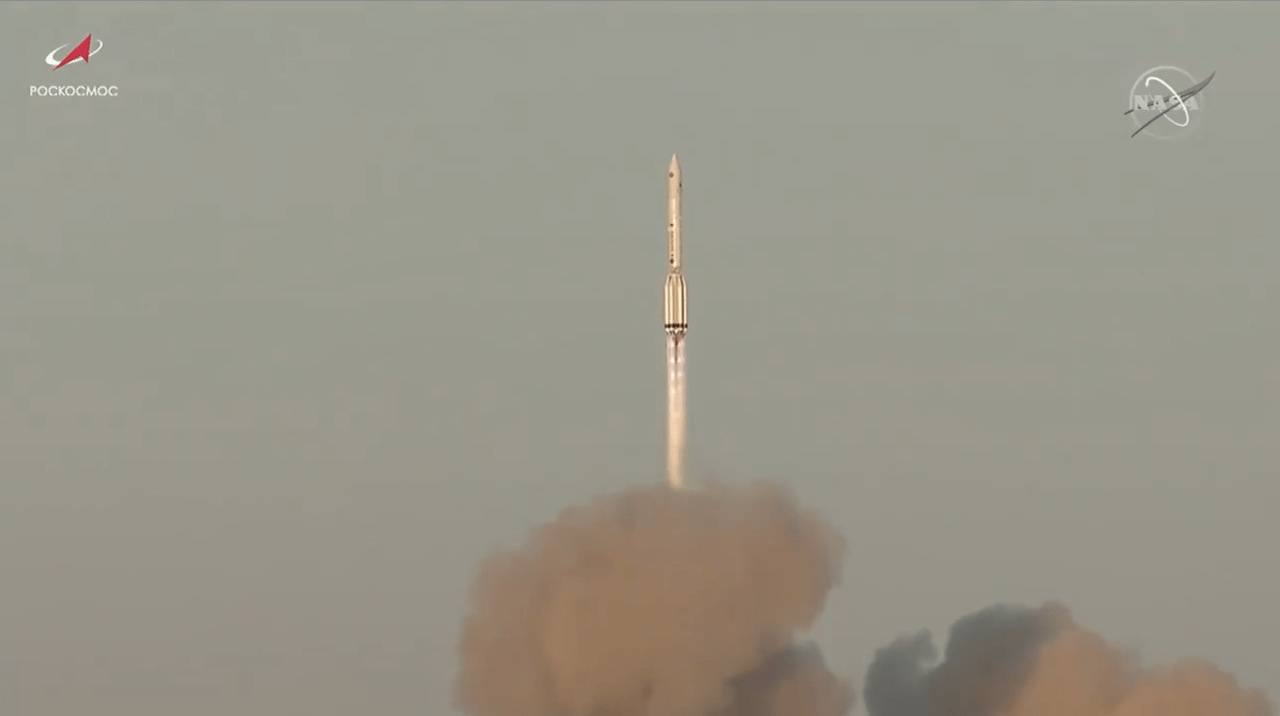The International Space Station (ISS) is about to get a little bigger.
On July 21, the Russian Space Agency launched the station’s newest module into orbit aboard a Proton-M rocket. The module, dubbed Nauka (which means science), is the station’s first new module since 2016, aside from some new docking ports and airlocks. The Nauka module includes several important additions that will enhance the station’s capabilities.
One of Nauka’s primary functions is its guidance and navigation system, which will provide additional attitude control capabilities to the ISS. At 13 meters long, the module’s interior contains new research facilities and storage space. The module also provides additional sleeping quarters for station crew. This is an important addition, since the United States recently re-established its human spaceflight capabilities with two new spacecraft: SpaceX’s Crew Dragon capsule, and the upcoming Boeing Starliner, slated for another test flight later this year. The addition of both new vehicles alongside the Russian Soyuz vehicle means that bigger crews can visit the station at once, and Nauka will provide these larger crews with a home.
Nauka is also carrying one other new piece of technology: a robotic arm built by the European Space Agency. A counterpart to the Canadarm 2 already on station, the European arm is 11 meters long and is designed to ‘walk’ around the Russian segment of the ISS (which the Canadarm can’t reach), carrying out repairs and upgrades as necessary.

Nauka’s development was a troubled process, and it has gone through years of problems and delays. It was first built as a backup to the Zarya module – the first component of the ISS ever launched in 1998. Nauka was set to join its twin in orbit in 2007, but failed to launch then, and was delayed again several times for various reasons, including fuel leaks, expired warranties, and most recently, pandemic delays.
In recent months, political tensions have raised questions as to the extent of Russia’s commitment to its partnership role in ISS. Nauka’s launch, at last, provides some concrete evidence that Russia is indeed committed to maintaining its presence on the station, at least in the short term, which is good news for everyone involved.
Unfortunately, Nauka’s launch didn’t go entirely smoothly. Although it reached orbit and its antenna and solar panels deployed as expected, a computer glitch caused its first orbit-raising maneuver to fail. After some troubleshooting, a second attempt at the maneuver appears to have been successfully carried out by backup thrusters on July 22.
If all goes well from here on out, it should take about a week for Nauka to reach the station. The latest update from the Russian Space Agency indicated that the next orbit raising attempt is scheduled for Tuesday July 27.
Plans are still in place to remove the Pirs docking port from the station this week (which will burn up in the atmosphere) to make room for Nauka, suggesting that confidence is high that the module will arrive as planned.
Learn more: Jeff Foust, “Russia launches Nauka module to International Space Station” SpaceNews.
Featured Image: Nauka’s launch on July 21. Roscosmos/NASATV.

